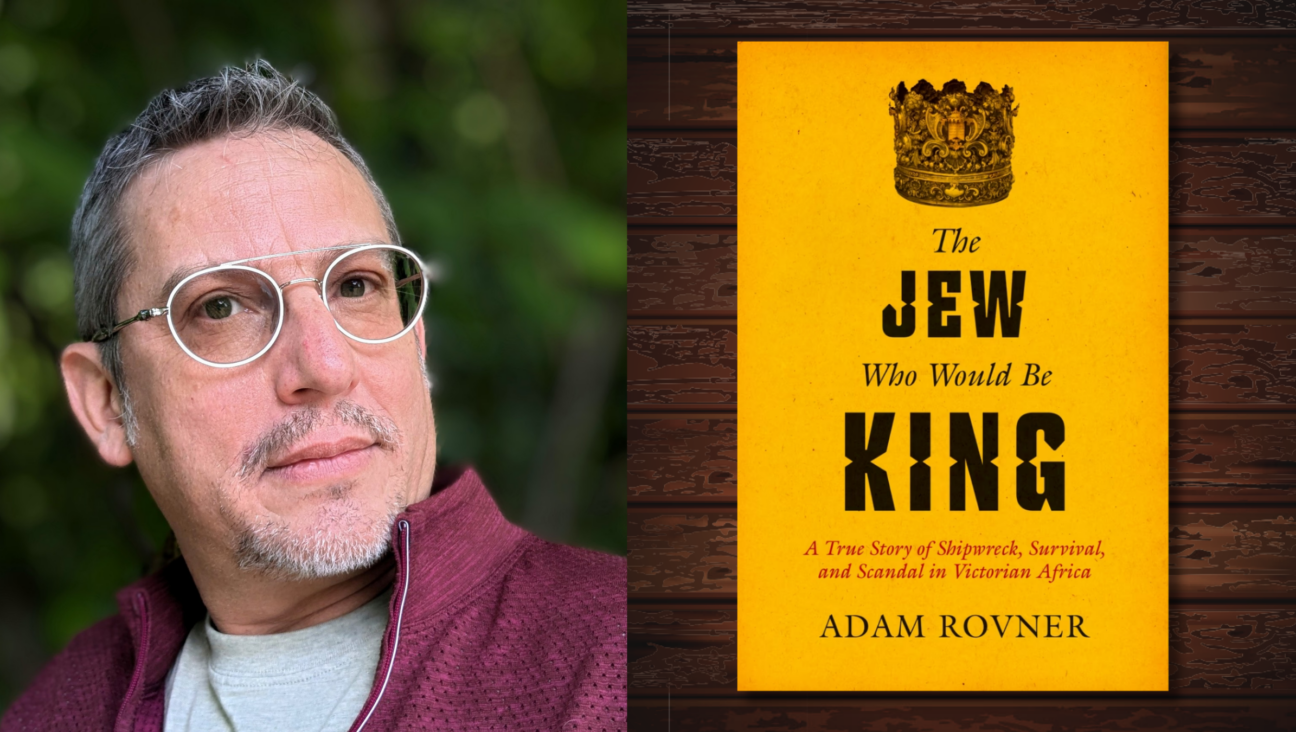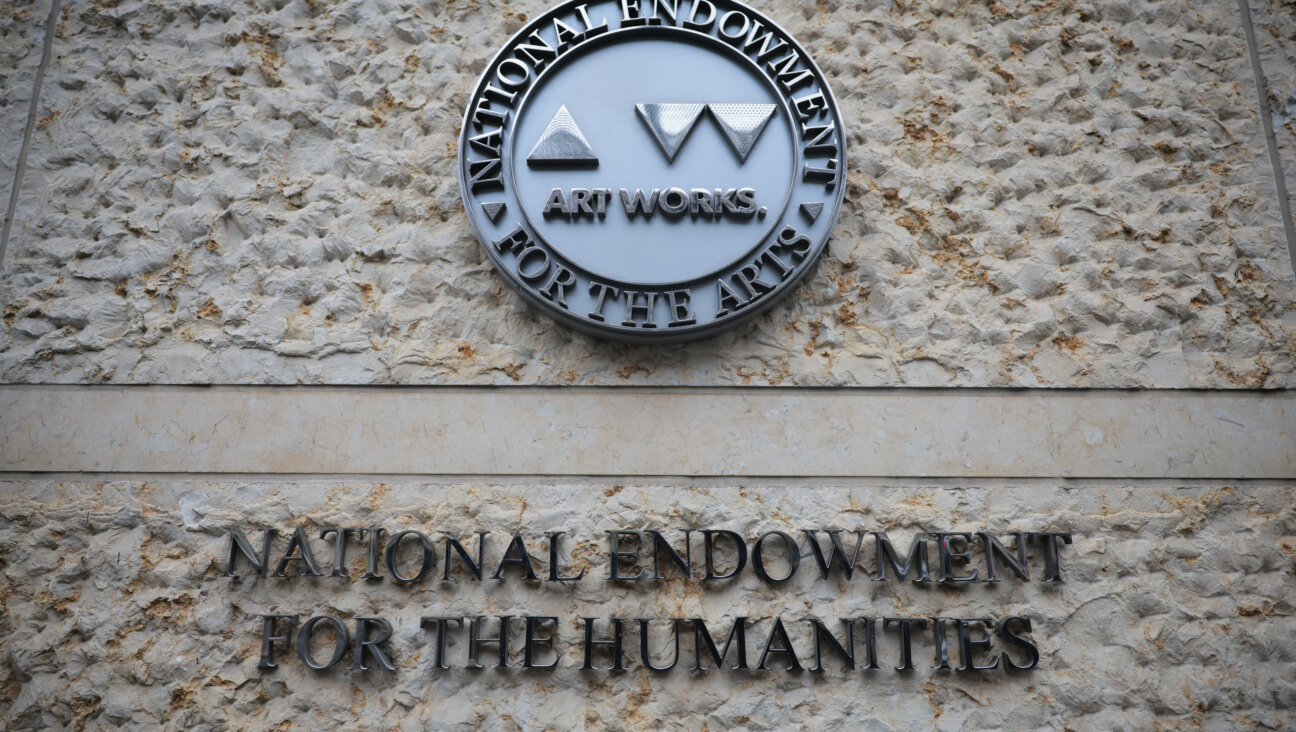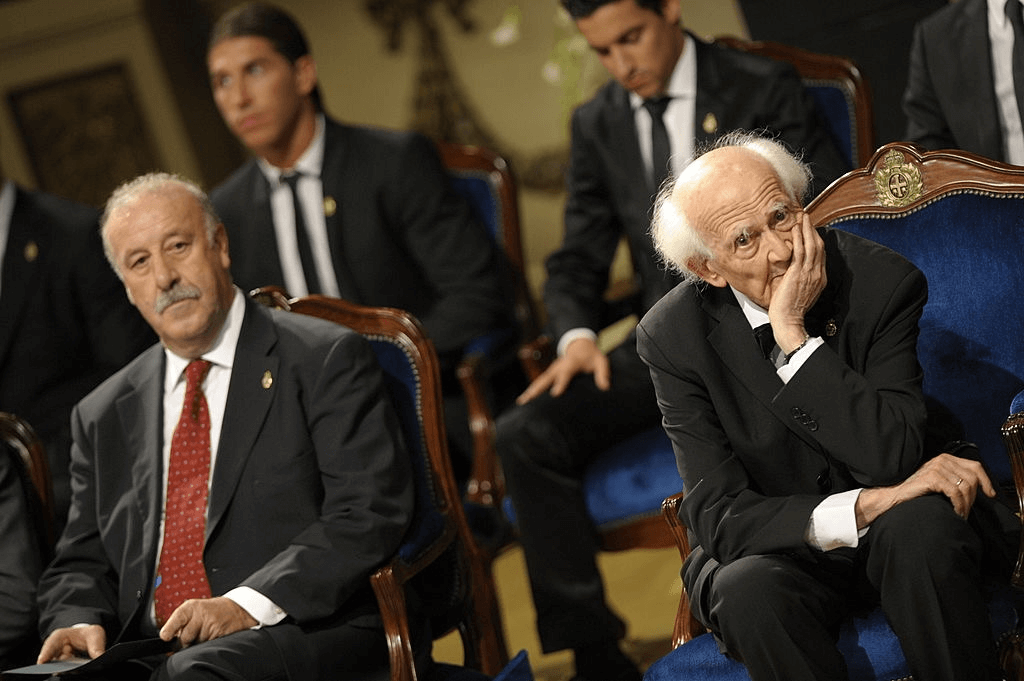Narrative History in the Grand Tradition
A History of the Jews in the Modern World
By Howard M. Sachar
Knopf, 848 pages, $40.
* * *|
Narrative history is all about plot. At its best, it marshals its facts and then marches them out to tell orderly tales. It cannot really concern itself with complicated social structures because its linear organization favors relatively simple cause-and-effect accounts. Its strength lies in its ability to tell compelling stories that have coherent beginnings, middles and ends.
Howard M. Sachar’s hugely readable “A History of the Jews in the Modern World” is narrative history in the grand tradition. Sachar has a lot of experience with this kind of thing. A professor emeritus of history at George Washington University, he has written 15 books, including a 1,100-page history of Israel and a 1,000-page history of the Jews in America.
“A History of the Jews in the Modern World,” which weighs in at 848 pages, is therefore comparatively svelte. But its aims are broad. It seeks to do nothing less than explain the past four centuries of world history as it has affected the Jews. And ranging from Shanghai to Buenos Aires, he traces that history in every place — on every continent — that had a significant Jewish population during this period.
Sachar obviously expects his title to do most of his heavy conceptual lifting, and so he launches straight into the narrative without bothering to explain what he means by modernity or who counts as a Jew. In fact, he does not even tell us what part of history he will emphasize, does not say whether he is looking at the political, economic, social or economic realms. By the same token, Sachar gives us nary a hint about the kind of story he is about to tell. It could easily be an epic of triumph, in which the Jewish people overcome misery, rejection and murder to become fully accepted citizens of the world. Or it could just as easily be cast as a tragedy in which the Jews are forced to make great sacrifices only to be slaughtered or forced to renounce all vestiges of their traditional identity.
As it turns out, “A History of the Jews in the Modern World” is mostly devoted to politics and economics. It describes the Jews’ move from the ghettoes of the feudal world (where they still exercised a large degree of communal self-regulation) to the contemporary situation where they almost universally enjoy political, legal and social equality with non-Jews. At the end of Sachar’s tale, the Jews are divided between the Diaspora and Israel, and as he does not seem to feel too disappointed by this outcome, we cannot say that his is a strictly Zionist history. The curve of the narrative reveals Sachar’s book to be a judiciously ambivalent mixture of comedy and tragedy. It succumbs to neither jubilation nor despair.
The thread of Sachar’s tale follows the tortuous, sometimes tortured history of a very slow emancipation. The decline of feudalism and the development of the nation-state turned the Jews into a threatening anomaly. Not only did they refuse to accept Christianity (or Islam), but they also belonged to an alien people and thus constituted a nation within a nation. Two options, therefore, lay open to the polities of the known world: Either they could expel the Jews from their lands, or accept the Jews as equals.
Neither option was easy. In the 18th century the Russians tried expulsion, only to find that their growing empire kept gaining new Jewish populations. And so they tried everything they could to rid themselves of their Jews. At the same time, the Prussians, out of largely economic considerations, experimented gingerly with toleration, without being able to commit to full equality for close to a century. As Sachar shows, in Germany as elsewhere, almost every halting gesture toward granting full civic rights to the Jews was greeted by some form of antisemitic reaction.
Nevertheless, despite (even perhaps because) of this constant resistance, the Jews were able to do great things. There is more than a touch of old-fashioned pride in Sachar’s concise portraits of Jewish achievement. Physicists, trade unionists, philosophers and denizens of the needle trades are all memorialized, if only for a few, usually choice, idiomatic sentences. These pocket biographies constitute one of the hidden strengths of “A History of the Jews in the Modern World.” Sachar is as good on the great Jewish capitalists — the Rothschilds, the Hirsches and their ilk — as he is on the great Jewish Reds — Trotsky, Luxemburg and their ilk. (It must be admitted, though, that apart from his discussion of Heinrich Heine, Sachar is weakest and least accurate when it comes to writers and artists.)
In the end, the model of Jewish integration that seemed to prevail followed the basic blueprint drawn up during the French Rev-
olution: The Jews would have to swap nationhood for citizenship. As Count Stanislas-Marie-Adelaide de Clermont-Tonnère, a member of the French National Assembly, argued famously in 1791: “The Jews should be denied everything as a nation, but granted everything as individuals…. They must constitute neither a state, nor a political corps, nor an order. They must individually become citizens.” Judaism would have to become a private matter, a question of personal faith. Or, as a 19th-century writer put it, emancipation depended on being a citizen in the street and a Jew at home.
But this model was never completely successful, until the end of World War II. (This is true even in the United States, where the Jews had had the easiest passage to civic equality.) In France, in Germany, in the successor states to the Hapsburg and Ottoman empires, Jews still bore the taint of being somehow foreign. Late-Victorian scientific racism tried to explain this taint and antisemitic populist parties turned it into a national issue. The most gripping sections of Sachar’s narrative — more than 300 pages at the center of the book — are devoted to the 50 years of complicated contingencies that brought these parties to the fore, to the political missteps and maneuverings that finally led to the massacre of Central Europe’s Jewish population during the Second World War.
It was thus only after the establishment of the state of Israel, and only after the Cold War, that the Jews achieved full political and social equality. But this normalization — important as it is — is surely only one part of modern Jewish history. Because Sachar is telling the story of emancipation — an essentially political tale — he is primarily interested in (mostly male) Jewish achievement and (frequently male) antisemitic resistance. He is not particularly concerned with recent trends in social or cultural history. And, interestingly enough, Sachar does not seem to care about religion at all, except where it might serve as a reflection or an expression of Jewish political realities. (For example, while he does pay some attention to the Reform and Conservative movements, Sachar makes no mention at all of Samson Raphael Hirsch, nor of modern Orthodoxy.) In the end, he is primarily concerned with Jews in the street, not in the home; Jews in their relations to the goyish world, not in their relations with themselves.
Sachar is basically telling a story about the Jews as a nation, not a religious group. And it is here that the true oddity of modern Jewish history comes out, an oddity that Sachar’s book shows without ever clearly articulating. According to the deal that Clermont-Tonnère spelled out two centuries ago, the modern states agreed to grant the Jews full equality on the condition that they would give up communal commitments and practice a “private” Judaism. While Jews have become willing citizens of the countries of the world, and have been able, in some cases, to “modernize” their religion, they have clearly refused to give up their identification as a distinct people.
This refusal leads to a difficult and continuous interplay of loyalty and suspicion. It means, as Sachar points out at the end of “A History of the Jews in the Modern World,” that the Jews of the Diaspora are held responsible for Israeli policies they cannot control. Does this peculiar situation indicate that the Jews (and the world) have entered a new, postmodern period of history? Or should we conclude that the Jews are still negotiating with modernity? It is hard to say, because we have not — thank goodness — reached the end of this ongoing tale.
The Forward is free to read, but it isn’t free to produce

I hope you appreciated this article. Before you go, I’d like to ask you to please support the Forward.
Now more than ever, American Jews need independent news they can trust, with reporting driven by truth, not ideology. We serve you, not any ideological agenda.
At a time when other newsrooms are closing or cutting back, the Forward has removed its paywall and invested additional resources to report on the ground from Israel and around the U.S. on the impact of the war, rising antisemitism and polarized discourse.
This is a great time to support independent Jewish journalism you rely on. Make a Passover gift today!
— Rachel Fishman Feddersen, Publisher and CEO
Most Popular
- 1

Opinion My Jewish moms group ousted me because I work for J Street. Is this what communal life has come to?
- 2

Fast Forward Suspected arsonist intended to beat Gov. Josh Shapiro with a sledgehammer, investigators say
- 3

Fast Forward How Coke’s Passover recipe sparked an antisemitic conspiracy theory
- 4

Politics Meet America’s potential first Jewish second family: Josh Shapiro, Lori, and their 4 kids
In Case You Missed It
-

Opinion I operate a small Judaica business. Trump’s tariffs are going to squelch Jewish innovation.
-

Fast Forward Language apps are putting Hebrew school in teens’ back pockets. But do they work?
-

Books How a Jewish boy from Canterbury became a Zulu chieftain
-

Fast Forward Suspected arsonist intended to beat Gov. Josh Shapiro with a sledgehammer, investigators say
-
Shop the Forward Store
100% of profits support our journalism
Republish This Story
Please read before republishing
We’re happy to make this story available to republish for free, unless it originated with JTA, Haaretz or another publication (as indicated on the article) and as long as you follow our guidelines.
You must comply with the following:
- Credit the Forward
- Retain our pixel
- Preserve our canonical link in Google search
- Add a noindex tag in Google search
See our full guidelines for more information, and this guide for detail about canonical URLs.
To republish, copy the HTML by clicking on the yellow button to the right; it includes our tracking pixel, all paragraph styles and hyperlinks, the author byline and credit to the Forward. It does not include images; to avoid copyright violations, you must add them manually, following our guidelines. Please email us at [email protected], subject line “republish,” with any questions or to let us know what stories you’re picking up.















